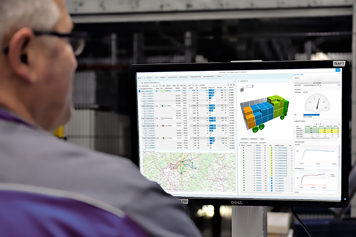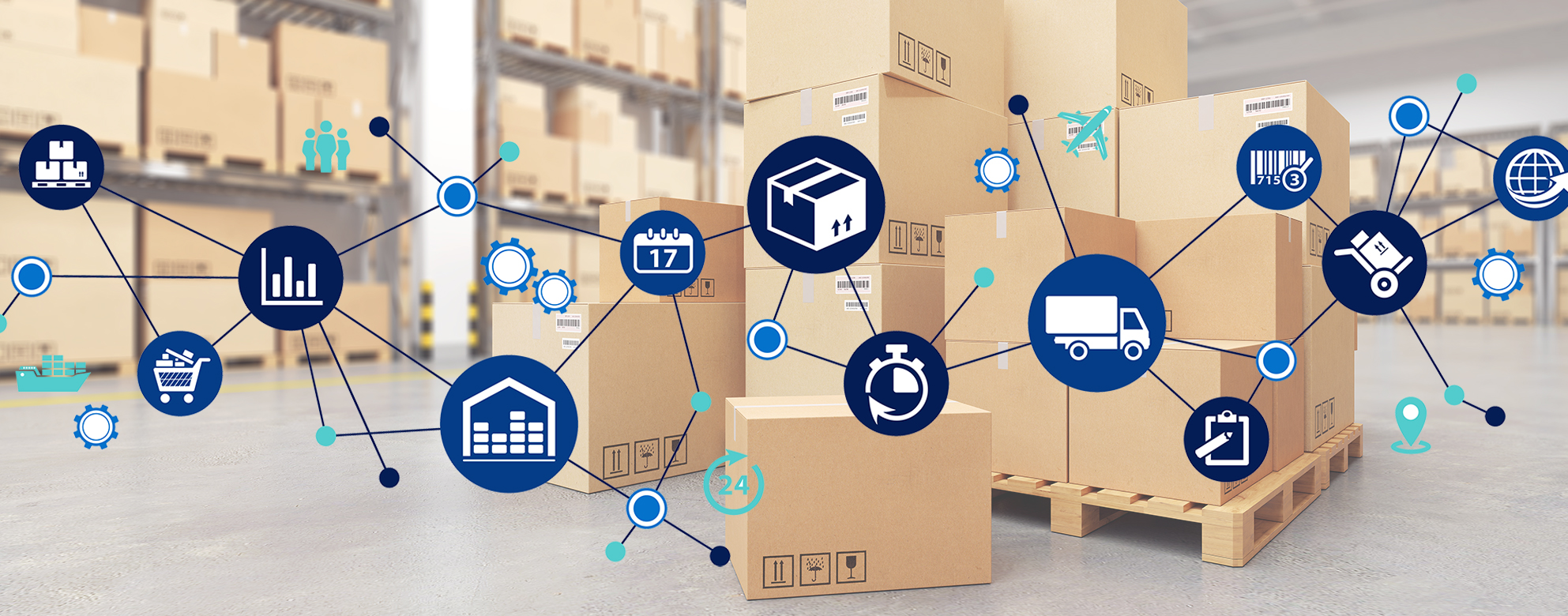Goals
- Automated document flow from warehouse to transport and back
- Optimized packages, pallets
- Optimum loading
- Picking after transport control
- Transport service provider selection in the warehouse
How important is the interaction between warehouse and transport?

In the view of increasingly complex transport networks, it is now necessary to include warehouse logistics in the considerations of the supply chain processes. This is the only way to achieve a clearly structured planning based on individual criteria as well as a goal-oriented and efficient supply chain management! This can be implemented comparatively easily using the SAP Supply Chain Execution Platform (SAP SCE) and the SAP S/4 Business Suite.
In order to clarify how this works, it is advisable to differentiate between the objectives of traditional warehouse planning and those of conventional transportation planning. Warehouse planning focuses on optimizing intralogistics processes, such as the collection of goods, warehousing, order picking, order consolidation and packaging. At the same time, it is important to control all resources in the best possible way in order to increase delivery quality and permanently reduce costs.
In the field of transport logistics, on the other hand, it is a question of organizing the transport from sender / supplier to warehouse / receiver as efficiently as possible. The processes upstream and downstream of the factory barrier are considered in the first place. The focus is also on a largely smooth interaction between various carriers.
However, self-sufficient planning is no longer appropriate in view of the requirements associated with the concept of logistics 4.0. Using SAP Transportation Management (SAP TM) and SAP Extended Warehouse Management (SAP EWM), it is possible to break outdated "patterns" and to digitally plan and synchronize both storage and transport processes.
The advantages that result from this can best be illustrated with two simplified, exemplary scenarios, as they can take place with a shipper in the outbound area:
Transport processing by specialised service providers
Shippers benefit in particular from system-based procurement of the necessary transport capacities offered by logistics service providers as well as their effective organization and use. In addition, you can use SAP TM in conjunction with SAP EWM to realize demand-based freight allocation of the goods made available in the warehouse. This is done on the basis of packing data and the respective conditions of the service partners and can also be made on an ad-hoc basis, if, for example, loading is imminent. There is no need to roll any tariffs / rates. The software removes this work from you by automatically comparing conditions. In addition, existing capacities and resources as well as preferred delivery dates and carriers are included. In this way, the optimization of loading and transport control already starts at the warehouse level!
Transport processing by own vehicle fleet
The big challenge for shippers is to make the best possible use of the hold of existing vehicles. In addition, there are restrictions such as different ramp heights during loading and unloading as well as available means and persons who support these processes. Again, the automation helps! After all, all influencing factors or framework conditions are taken into account in planning with SAP TM and SAP EWM and can be visualized.
For example: SAP EWM reports to SAP TM that more pallets have been generated in the warehouse than expected by SAP TM. This can always happen whenever the goods have not been optimally distributed to the load carriers. In such a case, the system assists the employee in deciding how to allocate the increased volume of pallets to another tour, which vehicles are available, whether an express shipment may be to be initiated, or whether the goods can be delivered tomorrow, without violate the requested delivery date.
Advantages
- More throughput
- Saving of shipping costs
- Saving of bearing processing costs
- Optimum loading
- Warehouse control is running
- Transport-optimized
What are the benefits?
An IT-supported interaction of warehousing and transport enables users to consistently synchronize all related processes and bring them all to an optimized level. From a profitability point of view, the big advantage is that besides the use of resources, deployment times can be minimized and freight costs reduced.
Indicators for a successful interaction of transport and intralogistics are:
- Order consolidation / consignment summary derived from transportation and warehouse planning
- Dedicated specifications for the packaging
- Definition of latest loading and departure times (cut-off times)
- Outsourcing and picking control in consideration of prioritized transports
- Requirements for the best possible delivery for loading in consideration of a meaningful loading order
- Compliance with legal regulations – for example for dangerous goods, customs goods & HACCP goods
- Work planning and forecasting of resource requirements in the areas of goods receipt and goods issue (inbound and outbound)
- Unified management of resources in the warehouse and during transport (employees, vehicles, swap bodies, containers, pallets, vessels, etc.)
- Yard and gate control based on intralogistics real-time data
- Feedback on the load units generated and provided in the warehouse


